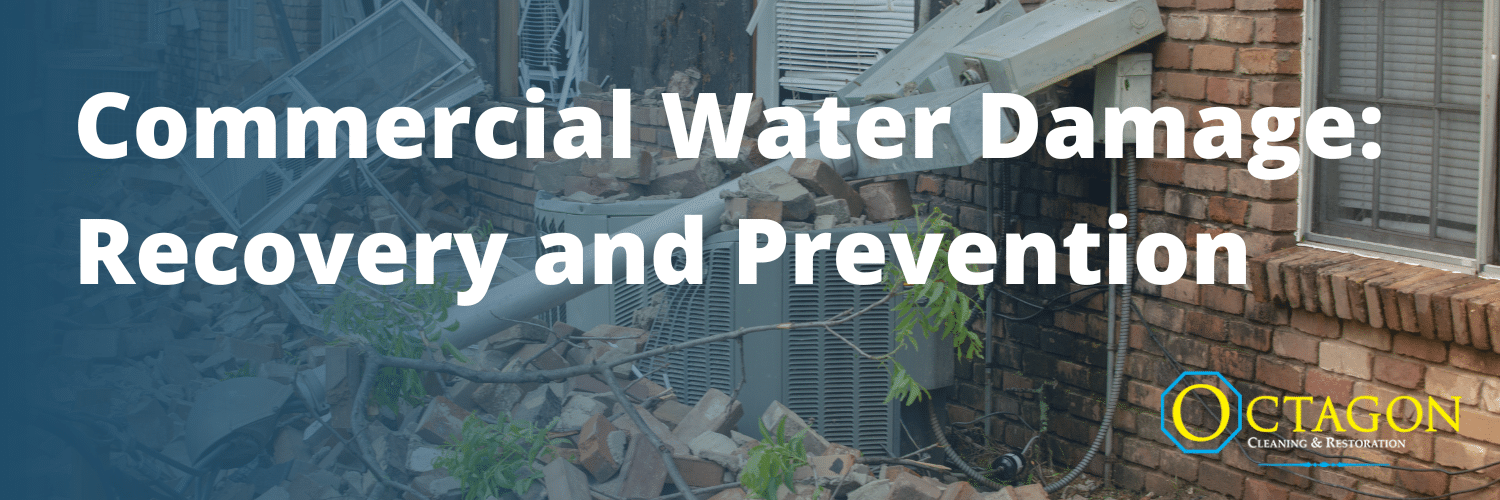
As a business owner, facing the aftermath of a storm can be overwhelming. Whether it’s a blizzard, windstorm, or flood, commercial properties are at risk of experiencing significant damage. However, with proper planning and knowledge, you can protect your property and ensure a smooth recovery process. In this comprehensive guide, we will walk you through the steps of commercial storm damage clean-up, providing you with the necessary information to get your business back on track.
Assessing the Damage
The first step in the commercial storm damage clean-up process is to assess the extent of the damage. By thoroughly inspecting your property, you can identify areas that require immediate attention. Here are some key areas to focus on:
Examine the Exterior
Start by inspecting your building’s exterior. Look for any signs of damage to the roof, windows, gutters, and downspouts. Pay close attention to the siding as well, as any cracks or damage can potentially allow moisture to seep into the walls.
Check Yards and Porches
Inspect your surroundings for broken tree branches that could pose a danger to power lines or threaten your building’s roof and windows. Additionally, ensure that fences are secure and examine decks, railings, and stairs around porches and patios for any damage.
Evaluate Outside Connections
Check your water, gas, and electric lines for any signs of damage. If you suspect an issue with any utilities, contact the appropriate authorities immediately. It’s important to ensure that heavy outdoor equipment, such as air conditioning units or swimming pool electrical systems, are still running safely.
Look for Attic Leaks
Inspect your attic for any signs of roof leaks. Problems with flashing and shingles may not be immediately obvious, so look for wet insulation and damp spots on beams as indicators of storm damage to the roof.
Follow the Moisture Inside
After heavy rain, moisture from the attic can seep into your building’s framing and crawl spaces, leading to mold and mildew growth. Inspect walls and ceilings for staining, particularly around electrical outlets and light fixtures. If any dampness is detected, begin drying out the affected areas as soon as possible.
Clearing the Space
Once you have assessed the damage, it’s crucial to clear the space and remove any standing water or excess moisture. Prompt action will help prevent further damage and minimize the risk of mold growth. Follow these steps to clear the space effectively:
Shut Off Power
Before entering the building, ensure that the power is shut off. If it’s unsafe to do so or you’re unable to turn off the power, contact your power company and request assistance. Safety should always be the top priority.
Remove Standing Water
Using squeegees, push brooms, and mops, start removing the water from the building through exits and floor drains. It’s recommended to have multiple dehumidifiers running continuously near floor drains to aid in the drying process.
Air Out the Space
To facilitate drying, move all items away from the walls and space them apart. Open windows to increase air circulation, and if it’s safe to do so, run fans to expedite the drying process.
Prompt Cleaning
Once the water has been cleared, it’s essential to start cleaning as soon as possible. Delaying the cleaning process can lead to further damage and increase costs. Remove appliances, electronics, furniture, and any salvageable items immediately. Lift carpets and under-padding to aid in drying and prevent mold growth.
Professional Assistance and Cleanup
While basic cleaning can be done by business owners themselves, it’s advisable to seek professional assistance for a thorough and efficient cleanup process. Professional restoration and cleaning companies have the expertise and equipment necessary to handle the restoration of commercial properties after storm damage. Here are some reasons why you should consider hiring professionals:
Safety First
Using electrical items or operating machinery that may have been damaged by water can be dangerous. Professionals are trained to handle these situations safely and can ensure that all necessary precautions are taken.
Extensive Experience
Professional restoration and cleaning companies have years of experience in dealing with storm damage. They understand the complexities involved in commercial clean-up and can provide effective solutions tailored to your specific needs.
Advanced Equipment
Commercial restoration companies have access to specialized equipment and tools that can expedite the drying and cleaning process. These tools, such as industrial-grade dehumidifiers and air movers, can help restore your property quickly and efficiently.
Mold Prevention
One of the major risks after storm damage is mold growth. Professionals can assess the extent of the damage and take necessary steps to prevent mold growth, ensuring the safety and health of your employees and customers.
Contact the Storm Restoration Experts at Octagon Cleaning & Restoration
When your business is affected by storm damage, it’s crucial to act quickly and efficiently to minimize further damage and ensure a smooth recovery. By following the steps outlined in this guide and considering professional assistance, you can successfully navigate the commercial storm damage clean-up process and get your business back on track. Remember, safety should always be the top priority, and seeking professional help will provide you with the expertise and resources needed for a comprehensive restoration.

